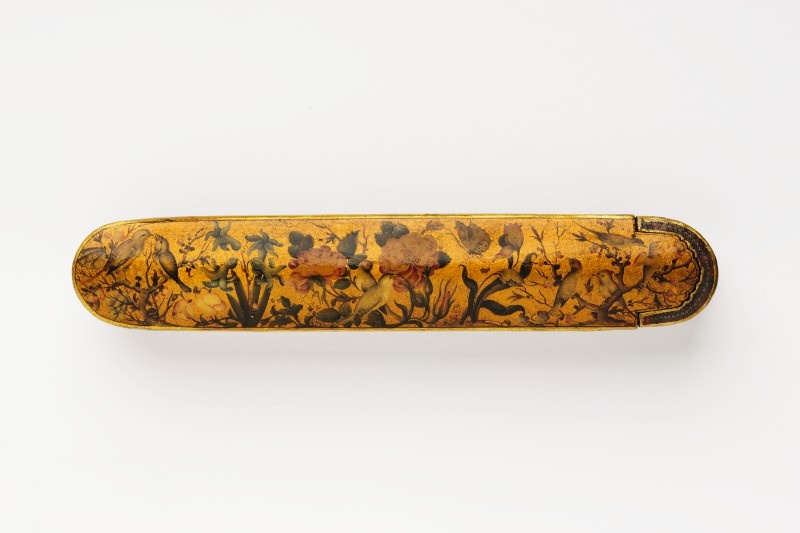Federkästchen wurden seit dem 17. Jahrhundert im Iran bevorzugt aus Papiermaché gefertigt. Das Federkästchen mit dem „Rose und Nachtigall“-Dekor gehört zu den besten Arbeiten seiner Zeit. Rose und Nachtigall stehen für die bedingungslose, auch den Tod in Kauf nehmende Liebe und werden in der persischen Poesie und Kunst oft als Thema aufgegriffen. (Text: Reingard Neumann)
Qadscharisch.
Schenkung von Ph. Walter Schulz, Berlin, 1907. 1898 in Isfahan erworben.
en

